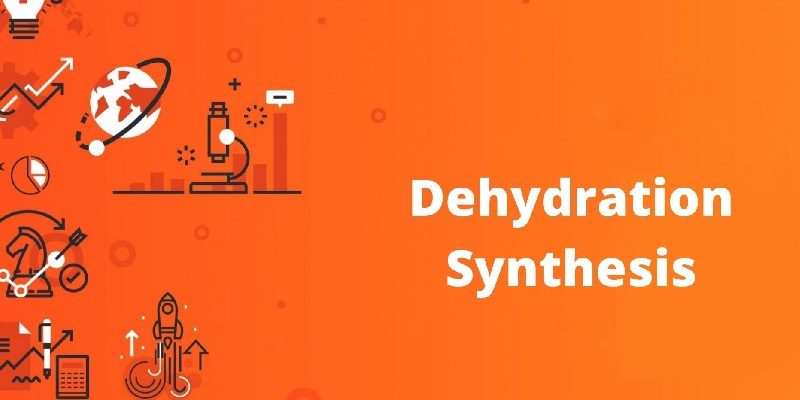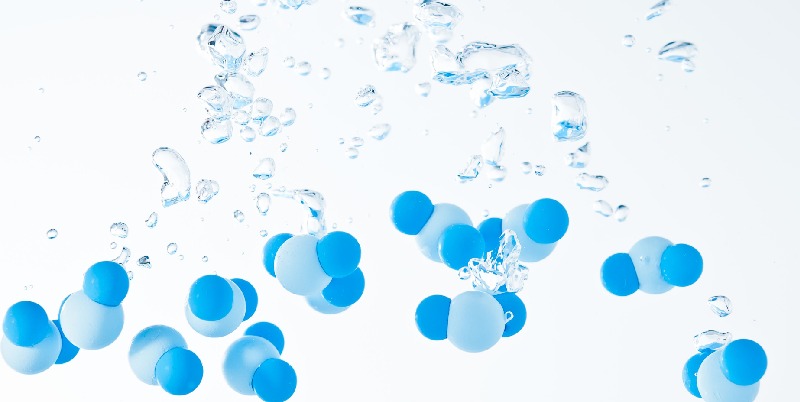
Dehydration synthesis is one of the rare terms that you possibly might not have ever heard of. However, if you know about chemistry or biology, then you might have heard the term. It happens when there is a low amount of available water that stays on your body. It is the reaction that chemically binds two different small molecules when water is removed. The structure of the new one is based on organic compounds, hydrocarbons, aliphatic compounds, and others.
Scratch is very crucial for the body but how it is made is unknown for most people. It is made due to the reaction of dehydration synthesis. If you are reading this article, it means you want to find out all the details about dehydration synthesis. It is one of the important parts that help the body to work perfectly. However, before jumping to find out the types and examples, here is the definition of dehydration synthesis given below.
What Is Dehydration Synthesis?
When talking about dehydration synthesis, the first thing that comes to our mind is the loss of water due to the “dehydration” part. Similarly, it appears when there is a loss of water molecules during the formation of some larger molecules. In most cases of dehydration synthesis, nature forms the biological polymers. Along with eliminating the water molecule, it also brings some individual monomers during the dehydration synthesis reaction.
Dehydration synthesis is a lot similar to condensation reaction that works in the same way. During the condensation reaction, two molecules come together to create a new compound by eliminating the water between them. So, both of them are quite similar based on the reaction and process. Dehydration synthesis creates the polymers that provide the necessary energy to the body.
Now that you know what is dehydration synthesis, we can proceed further and take a look at the types. Here are the types of dehydration synthesis are given below that will give you more information.
Dehydration Synthesis – Types
Dehydration synthesis types can be classified based on many different criteria. You can group them depending on the behavior of reactants. There are some reactants that are molecules and coms with two different functional groups that can react with each other. For example, both carboxylic acid and amine groups are found in amino acids. A carboxylic acid is a functional group that stays attached to the carbon atom.
Apart from that, dehydration reactions are also classified based on the catalyst nature. It depends on many different factors that you will get to see in the examples. Last but not least, dehydration reaction can also be classified by product. Now, let’s take a look at the examples to understand the types in more detail and find out more about the reactions.
Dehydration Synthesis – Examples
If you are wondering what is the difference between dehydration synthesis and hydrolysis, then you will need to take a look at these examples. Many times examples help you to understand better compared to other ways. Here are 2 examples that will help you to know a lot about dehydration synthesis.
- Dehydration synthesis first example is the formation of the polysaccharide. Polysaccharides monomer units are known as monosaccharides, which are also polyhydroxy carbonyl compounds. Using the glycosidic linkage, Monosaccharides bind with each other. This linkage is formed due to the reaction of two monomer units -OH groups by eliminating the water molecule.
- Another best example of dehydration synthesis is the biochemical reactions. Amino acids build protein blocks from polypeptides and peptides. Amino acids have two different functional groups, such as carboxylic group (-COOH) and -NH2. They form together and link as (-CO NH-) elimination of the water molecule.
Hydrolysis And Dehydration Synthesis
-
The formation of new chemical bonds can lead to the formation of new compounds. The loss of water that occurs at every step of the reaction is a result of the condensation reaction between two functional groups.
-
Polymerization is a great example of dehydration synthesis where the monomer units condense to form polymers.
-
The reverse reaction of dehydration synthesis hydrolysis includes the addition of water molecules to a compound.
-
The addition of water molecules can lead to a compound splitting into smaller units.
The Opposite Of Dehydration- Overhydration!
No, this is not a reaction. However, this is a condition that may occur in your body! So it is better to know more about this to avoid any problems. Overhydration, as the name suggests, is the excess of water in the body that can develop due to a disorder. The decrease in the body’s ability to excrete water can increase the body’s ability to retain water.
Don’t worry if you are meeting your water goals, there is less likely chance that it can cause overhydration as our kidneys are more than capable of excreting excess water.
Related Biology Terms
-
Disaccharide- it is a sugar molecule that has two monosaccharides attached through a condensation reaction.
-
Polymerization- It is the process of forming polymers that are processed to form plastic products.
-
Glycosidic linkage- It is a type of linkage formed between two monosaccharides through an oxygen atom. It involves the loss of a water molecule. The examples can include alpha-glucose, beta-fructose, which are joined through glycosidic linkage.
-
Protein- These are an essential biomolecule that are required for the proper functioning of muscles and bones. Proteins are also necessary for the formation of enzymes and hormones. The good sources of protein may be tofu, white-meat poultry, milk, eggs, beans and soy among others.
Aliphatic compounds- An organic compound that contains hydrogen and carbon atoms which are linked together through single, double or triple bonds.
Frequently Asked Questions:
Q1. What Happens When Dehydration Synthesis Occurs?
During dehydration synthesis, a new chemical bond formation happens between two molecules that leads to having a new compound formation. With the loss of water, this reaction occurs at every step. In addition, the loss of molecule water happens due to the reaction of two other functional groups such as -COOH. -OH, and others.
Q2. What Is Dehydration Synthesis And Why Is It Important?
Based on chemistry and biology, this is a reaction that binds two different molecules together due to the loss of water. Although it might not sound much important, the process is essential.
Q3. Where Does Dehydration Synthesis Occur?
In case of water shortage or water removal, this process occurs that joins two molecules. This process is very important, and it usually happens between molecules that have soon to be released proton and -OH group.
Q4. What Are Early Signs Of Dehydration?
There are plenty of early signs of this condition that you can look for. Some of the common ones include:
- Feeling tired
- Deep yellow and very bad smelling pee
- Feeling thirsty
- Lightheaded and dizzy
- Less than 4 times pee a day and very small amount
- Dry lips, mount, and eyes
Q5. How Does Dehydration Synthesis Form Triglycerides?
Triglycerides are important molecules that store energy due to being more energy-dense than carbohydrates. The three fatty acids that are attached to the glycerol molecule, through esterification.
The fatty acids react with the alcohol groups on the glycerol molecule to form the ester bond. This releases water. The excess of triglycerides lead to obesity and when it occurs outside adipose tissue it can lead to insulin resistance.
Conclusion
Many people are not sure how dehydration synthesis works and why it is important for your body. If you also want to find out the details about dehydration synthesis, then you can take a look at the above-mentioned points. It will help you to get an idea about dehydration synthesis, its types, and examples. l
Read Also:












